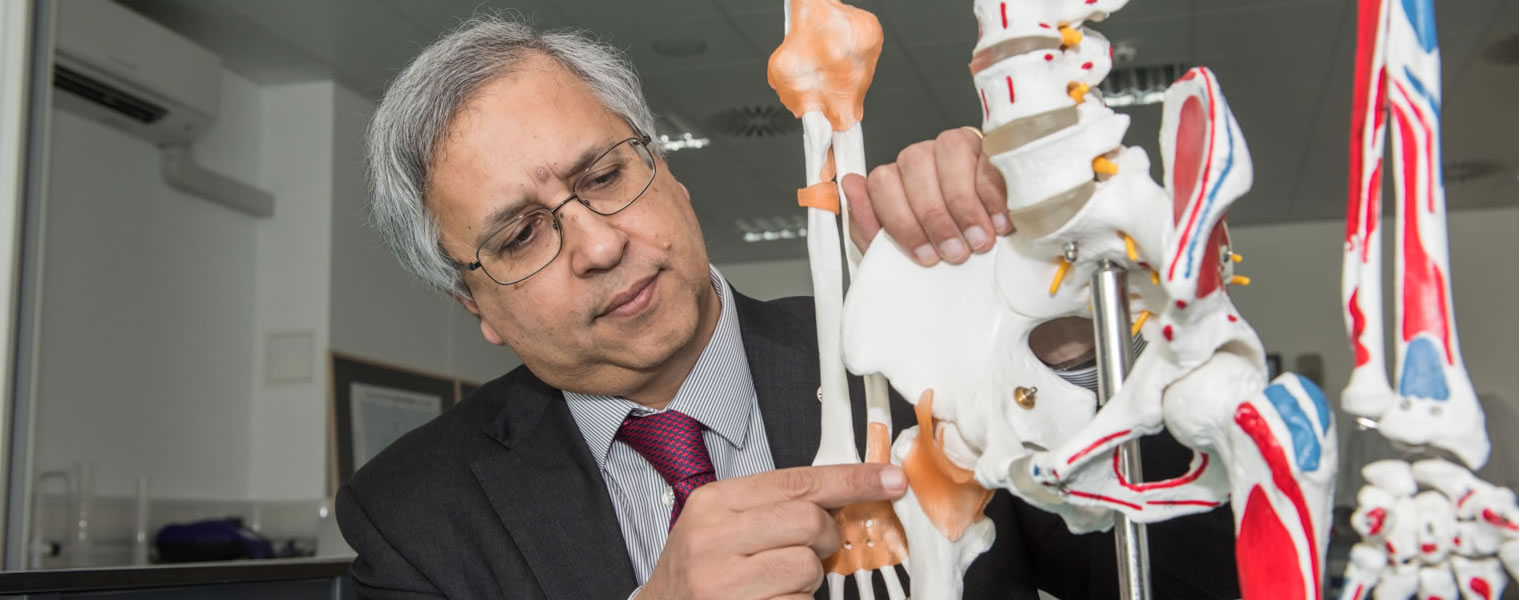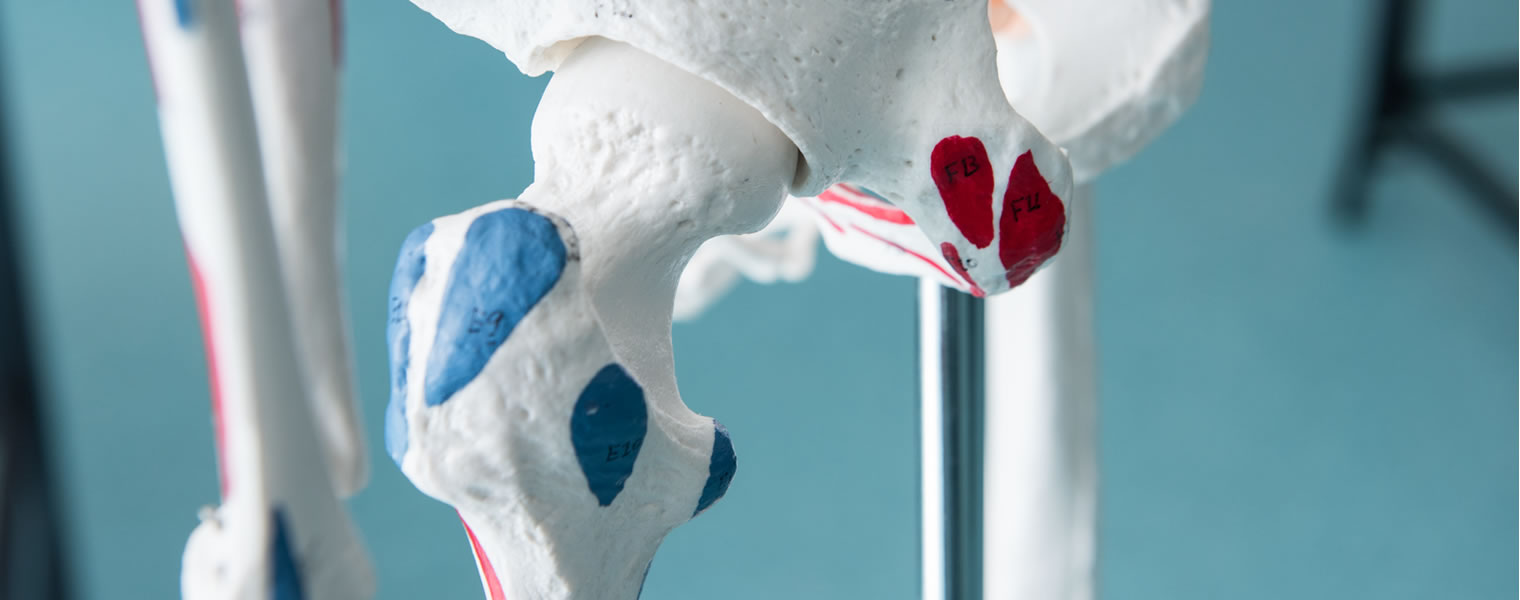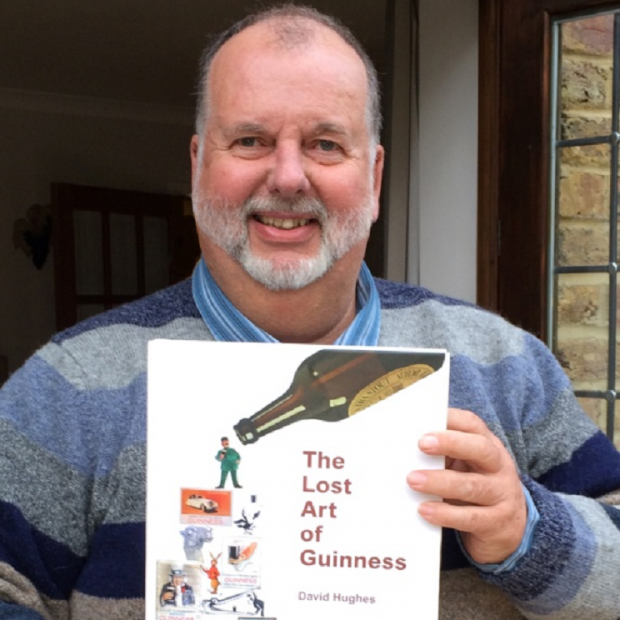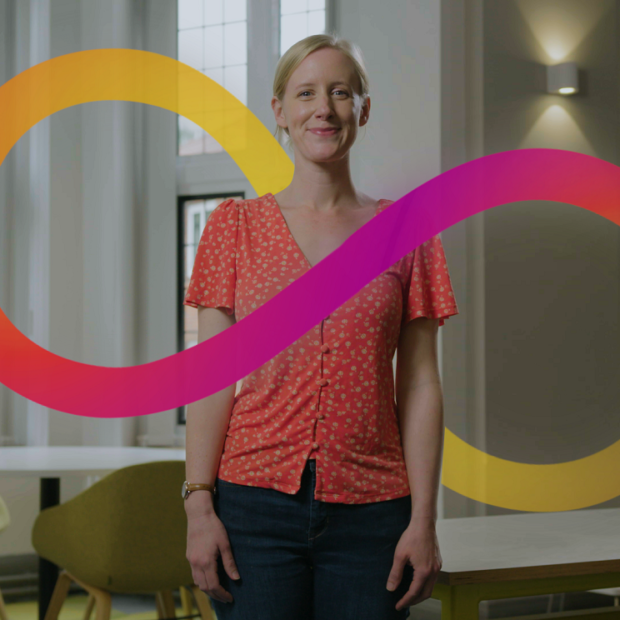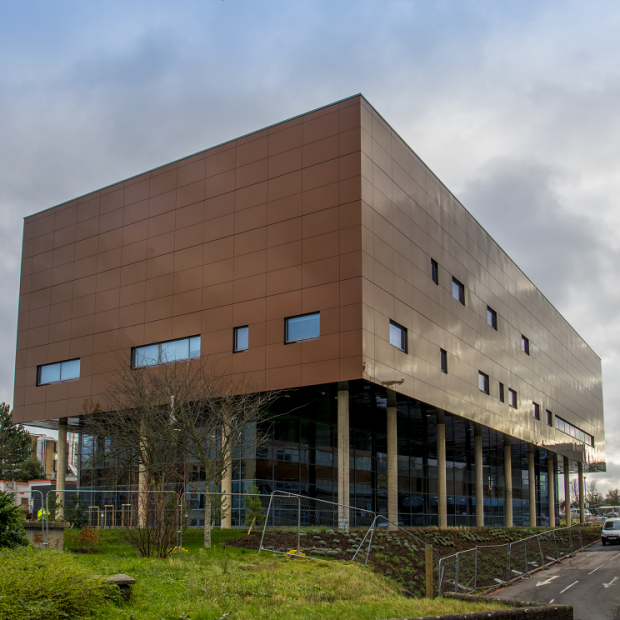Hartley News Online Your alumni and supporter magazine
Groundbreaking work at the University’s MRC Lifecourse Epidemiology Unit means that common conditions such as osteoporosis are now both preventable and treatable.
In the UK, one in two women and one in five men over the age of 50 will break a bone, mainly as a result of osteoporosis. With an ageing population, that statistic comes into ever sharper focus. According to the Office for National Statistics, people over 50 comprise over a third of the UK population, a figure that is on the rise.
Osteoporosis has had and continues to have a huge impact on many lives. For years it was perceived as an inevitable and non-treatable part of ageing, much like greying hair and thinning skin. However, thanks to the groundbreaking work of Cyrus Cooper, Professor of Rheumatology and Director of the MRC Lifecourse Epidemiology Unity (LEU), and a collaborative team of international scientists, osteoporosis is now both a preventable and treatable disorder, putting it in the same bracket as heart disease and diabetes. In recognition of the fundamental role that Cyrus has played in advancing research into the condition, he was awarded an OBE in the 2015 New Year Honours list.
Early interest
Cyrus’ involvement with musculo-skeletal disease first started with his doctoral research, conducted in Southampton, into factors that influenced hip fracture risk in later adult life. After a stint in the US at the Mayo Clinic, he took up a faculty position at the University in 1994, where he built up work programmes looking at the relationship between development, osteoporosis risk and fracture. That work, Cyrus enthuses, has led a path to many fascinating findings.
The research centred around three key observations. The first was that birth weight corresponded with bone density, shape, strength, and fracture risk 70 years later. The second discovery was that a mother’s vitamin D levels in pregnancy was associated with the child’s bone mass in the first eight or nine years of life. The third was that this association is explained by various epigenetic changes, in other words, modifications made to the foetus in response to the external maternal environment.
Cyrus explains: “There is a flexible developmental window in which interventions can improve the [health] trajectory but that plasticity gets restricted beyond the second year of post-natal life.” This research has informed public policy and led to the creation of a national vitamin D supplementation policy for pregnant women.
Continuing research into interventions and treatments that can be applied from pre-natal life through to old age has also meant that age-adjusted hip fracture rates are already declining in the US and are plateauing in the UK.
Thriving department
Cyrus has been resident in Southampton since 1992, after declining an offer of a faculty position at the Mayo Clinic in the US.
“It was a difficult decision to make, as the position in the US was a good one,” recalls Cyrus. “Southampton had a vibrant new medical school and was an excellent university, with very forward-looking leadership.
Over the last 30 years, the LEU has grown from a team of 40 to 80 people and covers a wide range of research disciplines, from population surveys and trials to molecular mechanisms and ways of understanding disease.“Success breeds success,” explains Cyrus. “We are a successful research unit and as a consequence we have been able to attract substantial funding.”
This is particularly impressive in an environment that has not been as receptive as it might have been to this new way of looking at non-communicable disease.
The disability burden resulting from osteoporosis, Alzheimer’s disease and arthritis is huge. But because they present after retirement, it has been harder to shine light on those disorders
admits Cyrus.
Wider research
Research into other areas of musculo-skeletal disease (especially its link to occupation) has included a study into rates of low-back pain among two groups of hospital nurses. The study showed that the provision of manual aids such as hoists to help with lifting does not reduce the frequency of back pain in the workplace. Rather, the strongest correlate of back pain in the two groups was anxiety, depression, feelings of self-esteem and control.
“We showed that the psychosocial causal pathway for back pain resolution is as important as the physical. Since those studies 20 years ago, there has been a huge amount of literature on psychosocial rather than physical determinants of back pain,” explains Cyrus.
Current research includes a consideration of the way that maternal vitamin D supplementation influences not just skeletal health, but also muscle and fat mass, and how physical activity and nutrition might benefit bone, muscle, and joints throughout the lifecourse.
Joining the dots
The research that is conducted at the LEU does not sit in isolation but is integrated with Cyrus’ clinical practice at the osteoporosis service at Southampton, and teaching responsibilities. Cyrus takes a keen interest in training, having benefited from an inspirational mentor in Professor David Barker.
My trainees often stay on in academic life and have attained senior positions here and elsewhere. I am very proud of that.
Cyrus’ research is also heavily influenced by his work with charitable foundations. He has chaired the board of the National Osteoporosis Society and is chair of the International Osteoporosis Foundation, all of which goes towards influencing global and national policy, and patient care.
As well as being recognised in the New Year Honours list, last year, Cyrus was the recipient of the Pierre Delmas Award, the premier research award presented by the International Osteoporosis Foundation for research into osteoporosis. He has published more than 600 research papers, and is ranked in the top 400 authors in the world – out of 15 million – based on number of citations.
The demands on Cyrus’ time are clear (although he does still manage to watch Southampton Football Club, where he has been a season ticket holder since 1984). However, he has no desire for a nine-five existence.
“I am lucky that I enjoy what I do, so it is not a burden. I have been fortunate to have such a wonderful job,” he concludes.
